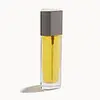What's inside
What's inside
 Key Ingredients
Key Ingredients

 Benefits
Benefits

 Concerns
Concerns

 Ingredients Side-by-side
Ingredients Side-by-side

Octyldodecanol
EmollientSesamum Indicum Seed Oil
EmollientCoconut Alkanes
EmollientMoringa Oleifera Seed Oil
EmollientHelianthus Annuus Seed Oil
EmollientParfum
MaskingLimonene
PerfumingCoco-Caprylate/Caprate
EmollientGinkgo Biloba Leaf Extract
Skin ConditioningCamellia Sinensis Leaf Extract
AntimicrobialTocopherol
AntioxidantRosmarinus Officinalis Extract
AntimicrobialCopernicia Cerifera Wax
Glyceryl Stearate
EmollientGallic Acid
AntioxidantCanola Oil
EmollientBenzyl Benzoate
AntimicrobialGeraniol
PerfumingBenzyl Cinnamate
PerfumingFarnesol
PerfumingLinalool
PerfumingCitral
PerfumingCitronellol
PerfumingOctyldodecanol, Sesamum Indicum Seed Oil, Coconut Alkanes, Moringa Oleifera Seed Oil, Helianthus Annuus Seed Oil, Parfum, Limonene, Coco-Caprylate/Caprate, Ginkgo Biloba Leaf Extract, Camellia Sinensis Leaf Extract, Tocopherol, Rosmarinus Officinalis Extract, Copernicia Cerifera Wax, Glyceryl Stearate, Gallic Acid, Canola Oil, Benzyl Benzoate, Geraniol, Benzyl Cinnamate, Farnesol, Linalool, Citral, Citronellol
Coco-Caprylate/Caprate
EmollientOctyldodecanol
EmollientCarthamus Tinctorius Seed Oil
MaskingSesamum Indicum Seed Oil
EmollientPrunus Domestica Seed Oil
Skin ConditioningMica
Cosmetic ColorantHydrogenated Castor Oil/Sebacic Acid Copolymer
EmollientHibiscus Sabdariffa Seed Oil
EmollientAscorbyl Palmitate
AntioxidantMoringa Oleifera Seed Oil
EmollientVanilla Planifolia Fruit Extract
Skin ConditioningTocopherol
AntioxidantHelianthus Annuus Seed Oil
EmollientCI 77491
Cosmetic ColorantCI 77891
Cosmetic ColorantCoco-Caprylate/Caprate, Octyldodecanol, Carthamus Tinctorius Seed Oil, Sesamum Indicum Seed Oil, Prunus Domestica Seed Oil, Mica, Hydrogenated Castor Oil/Sebacic Acid Copolymer, Hibiscus Sabdariffa Seed Oil, Ascorbyl Palmitate, Moringa Oleifera Seed Oil, Vanilla Planifolia Fruit Extract, Tocopherol, Helianthus Annuus Seed Oil, CI 77491, CI 77891
Ingredients Explained
These ingredients are found in both products.
Ingredients higher up in an ingredient list are typically present in a larger amount.
Coco-Caprylate/Caprate is created from fatty coconut alcohol, caprylic acid, and capric acid.
It is a lightweight emollient. Emollients create a thin barrier on the skin to trap moisture in. This helps keep your skin hydrated and soft.
Once applied, Coco-Caprylate/Caprate is absorbed quickly and leaves a silky feel.
Coco-Caprylate/Caprate may not be fungal acne safe.
Learn more about Coco-Caprylate/CaprateHelianthus Annuus Seed Oil is the oil derived from the seeds of a Sunflower. Sunflower seed oil is non-fragrant. It is an emollient, meaning it helps to soften the skin.
Sunflower seed oil contains many fatty acids. The fatty acids found in sunflower seeds include (from highest amount to least): linoleic acid, myristic acid, palmitic acid, stearic acid, arachidic acid, oleic acid, and linolenic acid.
These fatty acids help the skin create ceramides. Ceramides play a role in repairing the skin barrier.
Helianthus Annuus Seed Oil helps moisturize the skin. This in turn helps the skin look more rejuvenated and smoother.
Sunflowers are rich in vitamin E.
Historians believe Indigenous cultures of North America domesticated sunflowers before corn. Thus they relied on sunflower oil for a variety of uses. One such use is moisturizing skin and hair.
Sunflower seed oil may not be fungal acne safe. We recommend speaking with a professional if you have any concerns.
Learn more about Helianthus Annuus Seed OilMoringa Oleifera Seed Oil is the oil expressed from the seeds of Moringa oleifera plant. It is more commonly known as Moringa seed oil.
Moringa seeds have antioxidant, anti-inflammatory, and skin hydrating properties. These seeds are rich in oils, proteins, monounsaturated fats, and tocopherols.
As an emollient, moringa seed oil helps trap moisture in the skin by creating a film on top. This helps keep your skin hydrated and soft.
Many compounds in moringa seed oil are antioxidant and anti-inflammatory. These compounds include Vitamin E. , catechins, ferulic acid, and more.
Another compound found in Moringa seed oil is oleic acid.
Moringa trees are native to the Himalayan mountains.
This ingredient may not be fungal-acne safe.
Learn more about Moringa Oleifera Seed OilOctyldodecanol is a fatty alcohol. It is primarily used to enhance the texture of products.
As an emulsifier, Octyldodecanol helps prevent the oils and waters from separating. It also prevents ingredients from creating foam when shaken.
Octyldodecanol is created by reducing fatty acid to an alcohol.
Due to its high molecular weight, it does not get absorbed into the skin.
Learn more about OctyldodecanolSesame oil comes from sesame seeds. Sesame oil is rich in fatty acids and Vitamin E.
It has antibacterial, antioxidant, and anti-inflammatory properties. The phenolic compounds of this ingredient (including vitamin E) give it these properties.
Unrefined sesame oil has a comedogenic rating of 3, while refined sesame oil has a rating of 1. This ingredient may not be fungal-acne safe.
The fatty acids in sesame oil include linoleic acid (41%), oleic acid (39%), palmitic acid (8%), stearic acid (5%), and some small traces of others.
Learn more about Sesamum Indicum Seed OilTocopherol (also known as Vitamin E) is a common antioxidant used to help protect the skin from free-radicals and strengthen the skin barrier. It's also fat soluble - this means our skin is great at absorbing it.
Vitamin E also helps keep your natural skin lipids healthy. Your lipid skin barrier naturally consists of lipids, ceramides, and fatty acids. Vitamin E offers extra protection for your skin’s lipid barrier, keeping your skin healthy and nourished.
Another benefit is a bit of UV protection. Vitamin E helps reduce the damage caused by UVB rays. (It should not replace your sunscreen). Combining it with Vitamin C can decrease sunburned cells and hyperpigmentation after UV exposure.
You might have noticed Vitamin E + C often paired together. This is because it is great at stabilizing Vitamin C. Using the two together helps increase the effectiveness of both ingredients.
There are often claims that Vitamin E can reduce/prevent scarring, but these claims haven't been confirmed by scientific research.
Learn more about Tocopherol